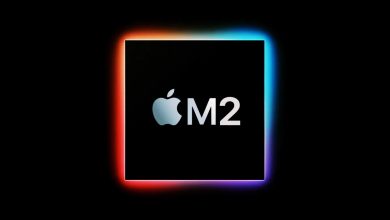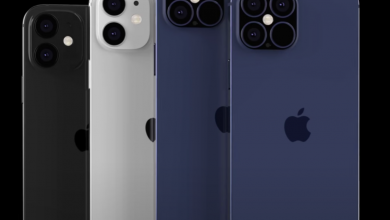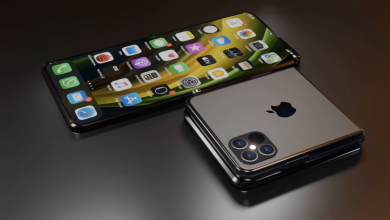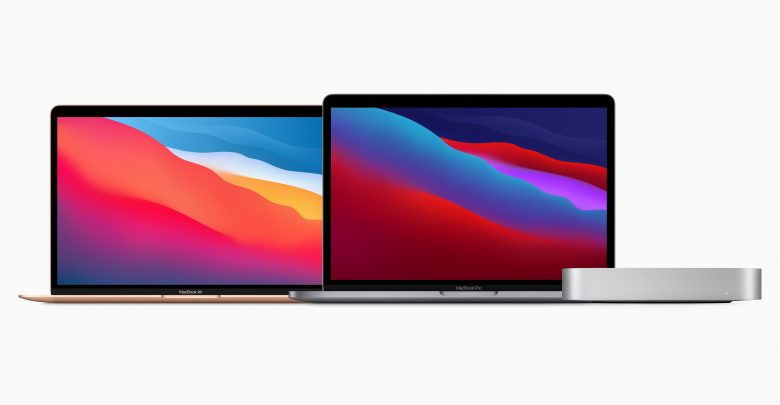
Apple finally makes its move towards ARM based processors and transition away from Intel processors, which Apple’s MacBook have used since 2006. This transition from Intel to ARM-based Apple Silicon is seen as a breakthrough moment in technology, and this would probably change the future of Mac. The biggest advantage of ARM processors is that they’ll provide better battery life, performance and efficiency than Intel. This will also be able to run iOS and iPadOS apps smoothly on macOS.
Cupertino, California, when CEO Tim Cook and his top executives unveiled the M1, the first computer integrated chip designed by Apple’s in-house. The unveiled new versions are- 13-inch MacBook Pro, MacBook Air, and Mac mini computers powered by its in house Apple M1 SoC. The first of this new generation of Apple Silicon processors is called the Apple M1- Apple’s own Arm-based CPUs- which features eight cores, as well as a custom integrated GPU, image signal processor, Secure Enclave, and Neural Engine. The Apple M1 is designed with a new unified memory architecture that is said to improve power efficiency, and is manufactured on a 5nm process.
Now, Apple’s first custom made CPU for notebooks, the M1, runs on just 10W, that is good for an octa-core CPU, but will it be as good as the Ryzen 4800U or 4800H or 4900HS or any Intel processor, I guess may be.
What is M1? Why is it so important?
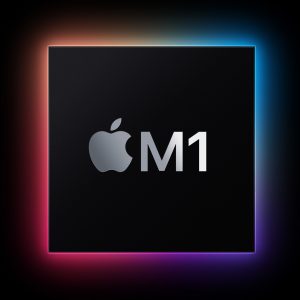
M1 is here, it is a small chip and giant leap. The first chip designed by Apple’s in-house specifically for Mac, it delivers incredible performance, custom technologies, and revolutionary power efficiency. And it was designed from the very start to work with the most advanced desktop operating system in the world, macOS Big Sur. With a giant leap in performance per watt, every Mac with M1 is transformed into a completely different class of product. This isn’t just an upgrade but it’s a breakthrough that would change the future of Mac.
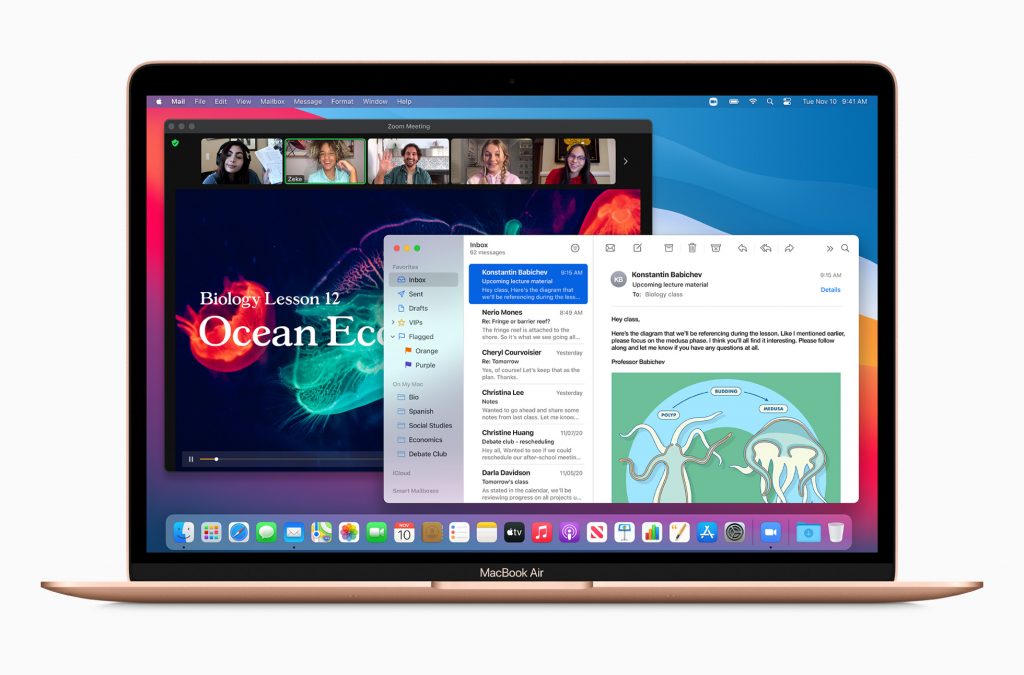
Mac required multiple chips to deliver all of its features – including the processor, I/O, security, and memory. With M1, these technologies are combined into a single system on a chip, delivering a new level of integration for more simplicity, more efficiency, and amazing performance. And with incredibly small transistors measured at an atomic scale, M1 is remarkably complex packing of the 16 billion of transistors we’ve ever put into a single chip. It’s also the first personal computer chip built using industry leading 5nm process technology.
Unified memory of M1
M1 also features unified memory architecture aka UMA. Apple has achieved something really amazing here. M1 unifies its high bandwidth, low latency memory into a single pool within a customized package. As a result, all of the technologies in the SoC can access the same data without copying it between multiple pools of memory. This technologies improves performance and power efficiency of the chip. Video apps are snappier. Games are richer and more detailed. Image processing is lightning fast. And your entire system is more responsive.
It also provides massive support for CPU performance, upto 3.9Xfaster video processing and upto7.1Xfaster image processing.
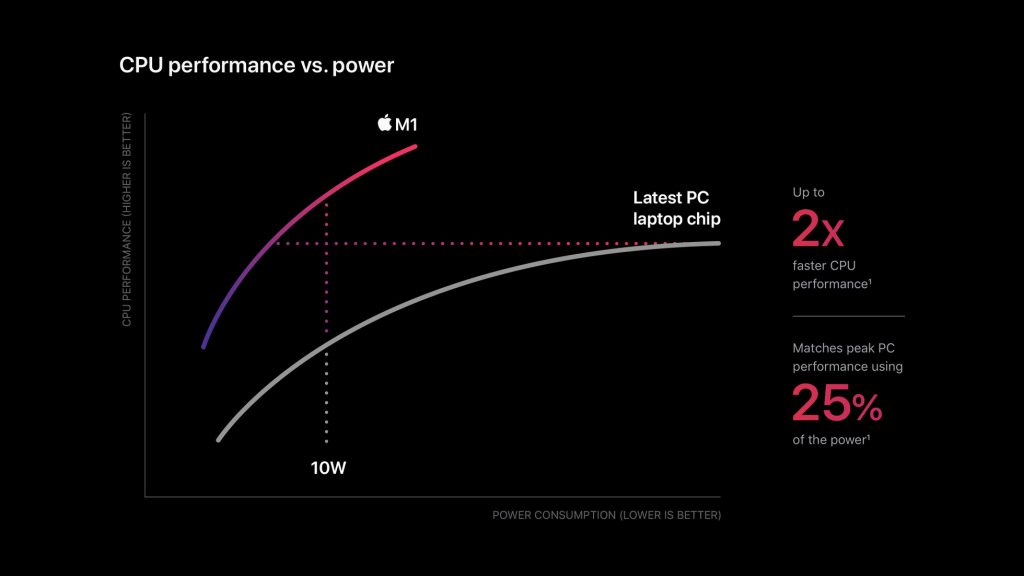
Since the world is developing with Artificial intelligence, M1 features the latest Neural Engine. Its 16‑core design is capable of executing a massive 11 trillion operations per second. In fact, with a powerful 8‑core GPU, Machine learning accelerators, and the Neural Engine, the entire M1 chip is designed to excel at machine learning. Final Cut Pro is said to run 6X and intelligently frame a clip in a fraction of the time. M1 extends battery life even while bringing a massive increase in performance. But the chip itself is only part of this incredible power efficiency story.
MacBook Air
MacBook Air is Apple’s most popular Mac. As mentioned MacBook air comes with M1 chip which speeds through everything from editing and exporting videos for the web, also provides better system performance. The powerful 8-core CPU performs up to 3.5x faster than the previous generation,which sounds just like any Qualcomm ARM based CPU, 8-core GPU, graphics are up to 5x faster, the biggest leap ever for MacBook Air, so immersive, graphics-intensive games run at significantly higher frame rates.
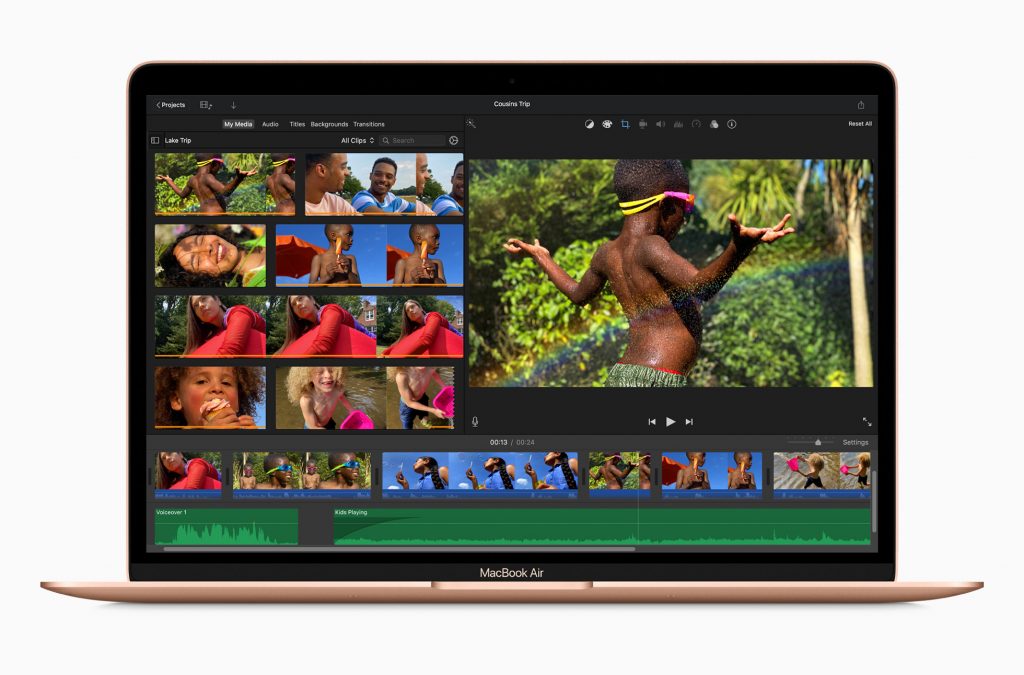
Since the growth of Machine Learning is increasing day by day, this provides an advantage for proper usage of ML.
ML workloads are up to 9x faster, so apps that use ML-based features like face recognition, speech recognition or object detection can be done smoothly in fraction of time. The M1 chip’s storage controller and latest flash technology deliver up to 2x faster SSD performance, so previewing massive images or importing large files is faster than ever, which is supposed be a great development. MacBook Air supports better battery life, with up to 15 hours of wireless web browsing and up to 18 hours of video playbacks, the longest battery life ever on a MacBook Air. MacBook Air comes with preinstalled Final Cut Pro. For the first time, play back and edit multiple streams of full-quality, 4K video in Final Cut Pro without dropping a frame and also Export a project for the web with iMovie up to 3x faster.
So when it comes to price, with its wedge-shaped design, Retina display, Magic Keyboard, and astonishing level of performance, the new MacBook Air once again redefines what a thin and light notebook can do. The MacBook Air with Apple M1 SoC will also keep the same prices as before, with a (8Gb RAM DDR4) 256GB variant priced at 92,900 INR and a 512GB model priced at 1,17,900 INR. The prices in the US are $999 and $1,249 respectively.
MacBook Pro
You find no big difference between MacBook Pro and MacBook Air but their are few better performance when it comes to Pro. With the M1 chip and Big Sur, the 13-inch MacBook Pro becomes even more powerful and even more pro. The 8-core CPU, when paired with the MacBook Pro’s active cooling system, is up to 2.8x faster than the previous generation, delivering game changing performance when compiling code, exporting video, editing high-resolution photos, and more. The 8-core GPU is up to 5x faster, allowing users to enjoy smooth graphics performance whether they are designing a graphics-intensive game or a new product.
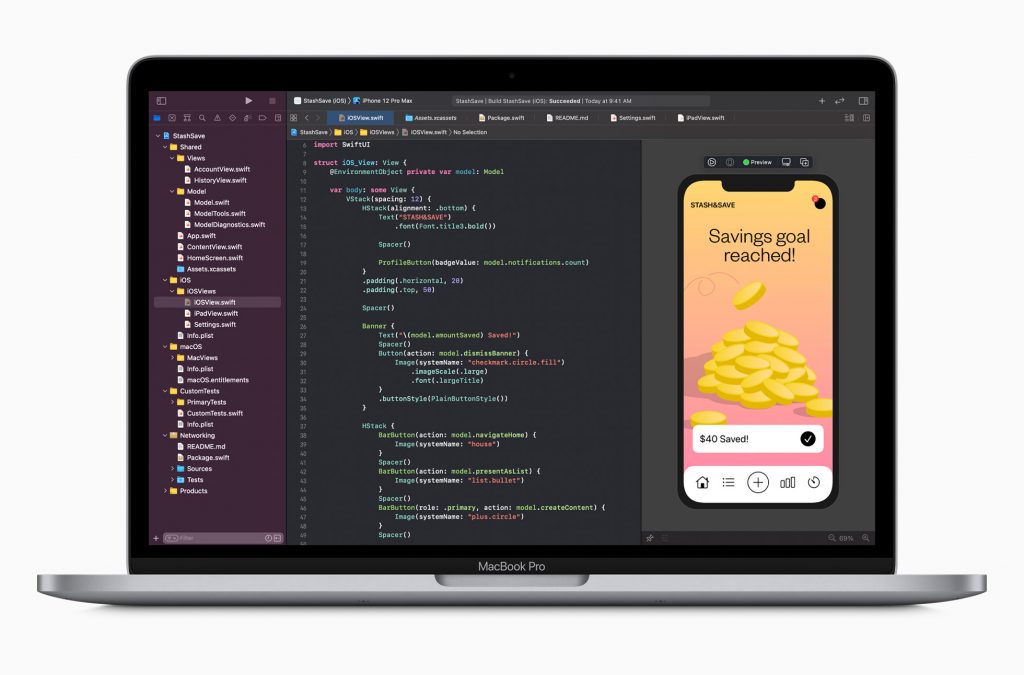
Apple really as done a terrific job in all its new unveiled versions. Pro support
ML up to 11x faster, and for on-device ML tasks that use the Neural Engine. MacBook Pro delivers up to twice the battery life of the previous generation and the longest battery life ever on a Mac. Programming and building code in Xcode is upto 2.8x faster. Compile four times as much code on a single charge, due to the game-changing performance per watt of the M1 chip.
Animation can be done smoothly with help of MacBook Pro. Rendering of a complex 3D modelling in Final Cut Pro up to 5.9x faster. Fluidly design intricate game scenes in Unity Editor up to 3.5x faster. Play back full-quality, 8K ProRes video in DaVinci Resolve without dropping a single frame. The 13-inch MacBook Pro is priced- with a (8Gb RAM DDR4) 256GB variant priced at 1,22,900 INR and a 512GB model priced at 1,42,900 INR. The prices in the US are $1,299 and $1,499 respectively. Both feature 8GB of unified memory.
MacBook Mini
The new MacBook mini packs a staggering amount of performance into its ultracompact design. M1 chip brings an 8-core CPU with up to 3x faster performance than the previous generation, accelerating demanding workloads, from compiling a million lines of code to building enormous multitrack music projects. An 8-core GPU delivers up to a massive 6x increase in graphics performance, allowing Mac mini to tackle performance-intensive tasks like complex 3D rendering with ease. ML workloads also take a quantum leap forward with up to 15x faster performance over the previous generation.
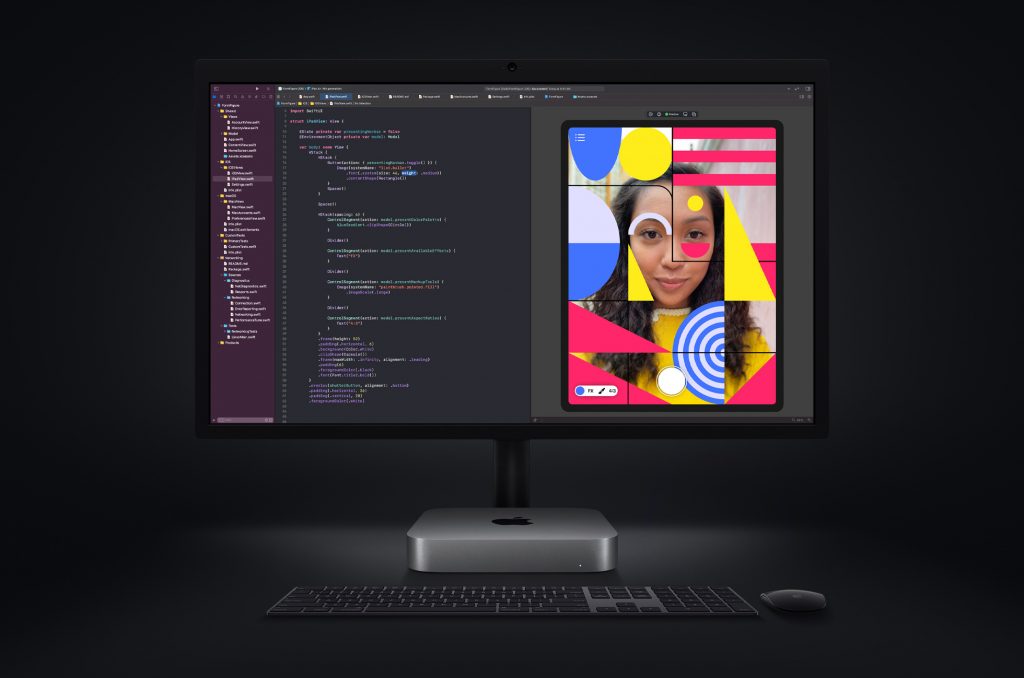
Utilize ML frameworks like TensorFlow or Create ML, now accelerated by the M1 chip. Mac mini also features an advanced thermal design to sustain its breakthrough performance while staying cool and quiet, support for upto two displays including Apple’s Pro Display XDR in full 6K resolution, and Wi-Fi 6 for faster wireless performance and the Secure Enclave in M1 for best-in-class security.
The new MacBook Mini gets a $100 price reduction and corresponding decrease , with a (8Gb RAM DDR4) 256GB memory variant priced at 64,900 INR and a 512GB model priced at 84,900 INR. The prices in the US are $699 and $899 respectively.
Education pricing is also available for all new Macs powered by Apple Silicon.
What makes it different from Intel systems? Intel vs ARM
The MacBook Air with M1 has an 8-core CPU, which is divided into four high performance cores and four efficiency cores. It also includes an eight core GPU for graphics. In comparison, the Apple MacBook Air with Intel processors came with the Intel Core i3(dual-core 1.1GHz), i5(quad-core 1.1Ghz) and i7 (quad core 1.2Ghz)processors.
Intel-based MacBook Pro 13-inch models are priced with 512GB and 1TB of storage priced at Rs. 1,74,900 and Rs. 1,94,900 respectively, ARM based MacBook Pro priced is already mentioned above.
With the MacBook Air, the M1 processor, impacts the system and battery performance, as Apple claims its System on Chip (SoC) ensures better power efficiency compared to the traditional processors seen on older laptops based on Intel. Apple is proclaim up to 15 hours of wireless web browsing and upto 18 hours of Apple TV app movie playback with the ARM based version. The Intel versions had up to 11 hours wireless web and up to 12 hours Apple TV app movie playback. The battery size is the same on both versions.
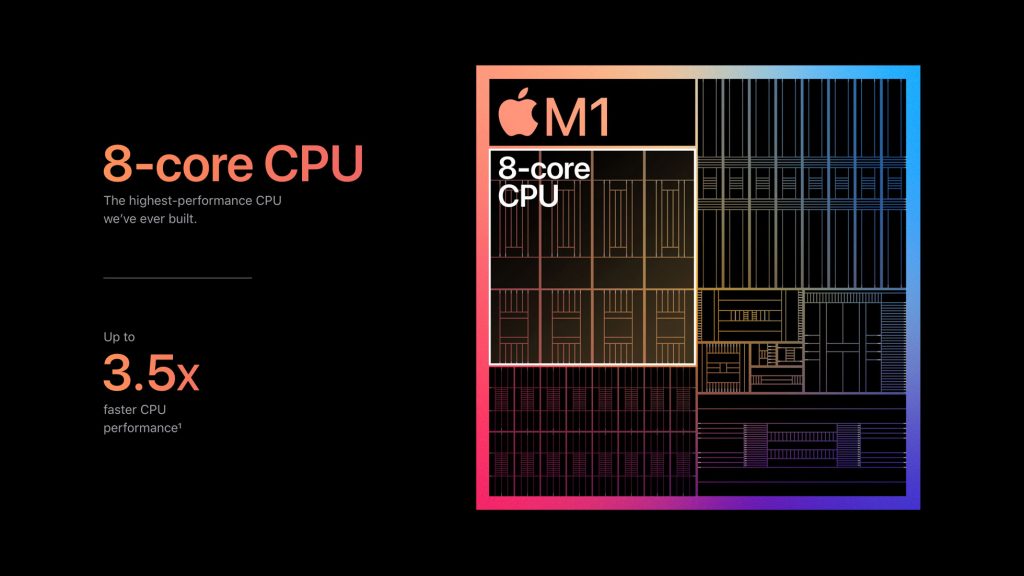
Apple’s M1 processor integrates CPU, GPU and includes a 16-core Neural engine for machine learning and AI-related tasks which is the major difference which got developed in ARM based systems, which is major difference from Intel version.

